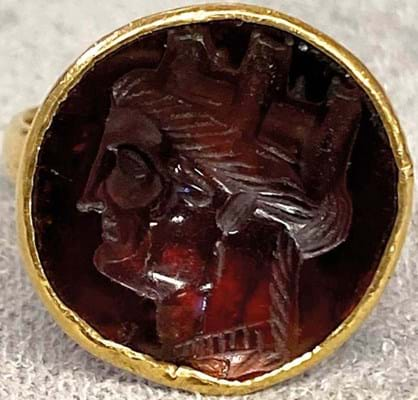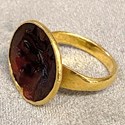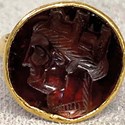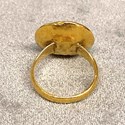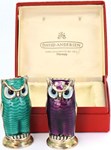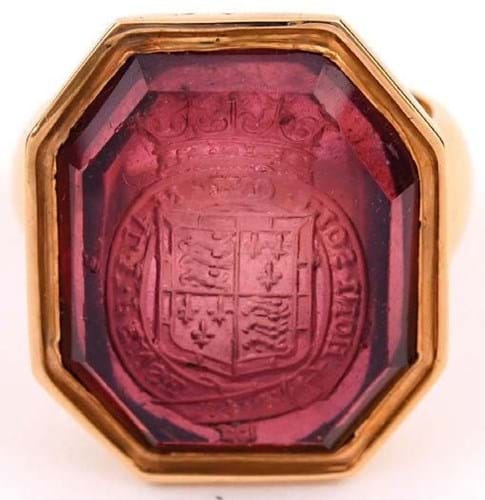
Foulkes was describing the current men’s fashion (and his penchant) for rings, particularly those with historical intaglios and cameos.
Of course, the market has been all over this revival of the glyphic arts for some time.
Interest in aristocratic connections helped two intaglio rings smash their estimates and sell for £9000 each at Lawrences (25% buyer’s premium) of Crewkerne on October 12.
Both will doubtless be the subject of future research. An engraved octagonal pink tourmaline intaglio ring estimated at just £300-500 was the first to sell as bidders betted the royal arms and motto were linked to the Beaufort family.
The auction house speculated the coat of arms, featuring the fleur-de-lis and lions passant, were for Henry Beaufort, 3rd Duke of Somerset. However, it is understood to be for Henry Somerset, 1st Duke of Beaufort (1629-1700).
Henry Somerset (styled Lord Herbert until 1667) received the title of Duke of Beaufort by Charles II in 1682 which referenced his ancestor John Beaufort (1371-1410). His arms featured the Order of the Garter motto Honi soit qui mal y pense as engraved to this ring. The motto of Henry Beaufort, the 3rd Duke of Somerset (1436-64), was Mutare ve timere sperno (I spurn to change or fear).
‘Queen Mary’ ring
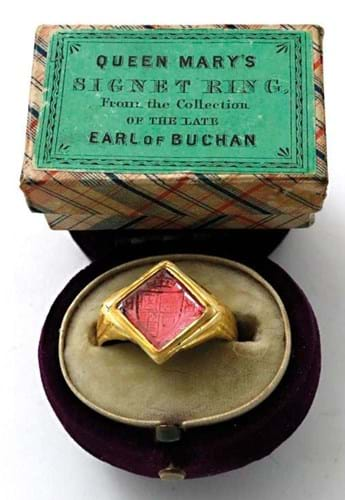
A gold and foiled glass signet ring labelled Queen Mary’s Signet Ring, from the collection of the late Earl of Buchan – £9000 at Lawrences of Crewkerne.
Also hammered down at £9000 (against an estimate of £200-300) was a gold signet ring set with a foiled glass intaglio housed in a Victorian box labelled Queen Mary’s Signet Ring, from the collection of the late Earl of Buchan.
It could be that this is a 15th century ring worn by Mary Stewart, Countess of Buchan (the fifth daughter of James I of Scotland and Lady Joan Beaufort) in the 1430s. However, the arms on the ring and the initials MR may well be a Victorian addition.
The rings came from the same vendor who had started collecting when she was young, buying at markets and antique shops with her father. She decided it was time to sell after collecting for many decades.
Intaglio rings, whether ancient, Renaissance or from the Grand Tour period, continue to bring strong sums.
The sale at Kidson Trigg (24% buyer’s premium) in Highworth, near Swindon, on October 6 included a good example: a probably Roman ring set in yellow metal with a classical bust wearing a crown. It was guided at £200- 300 but the hammer price was £9800.



